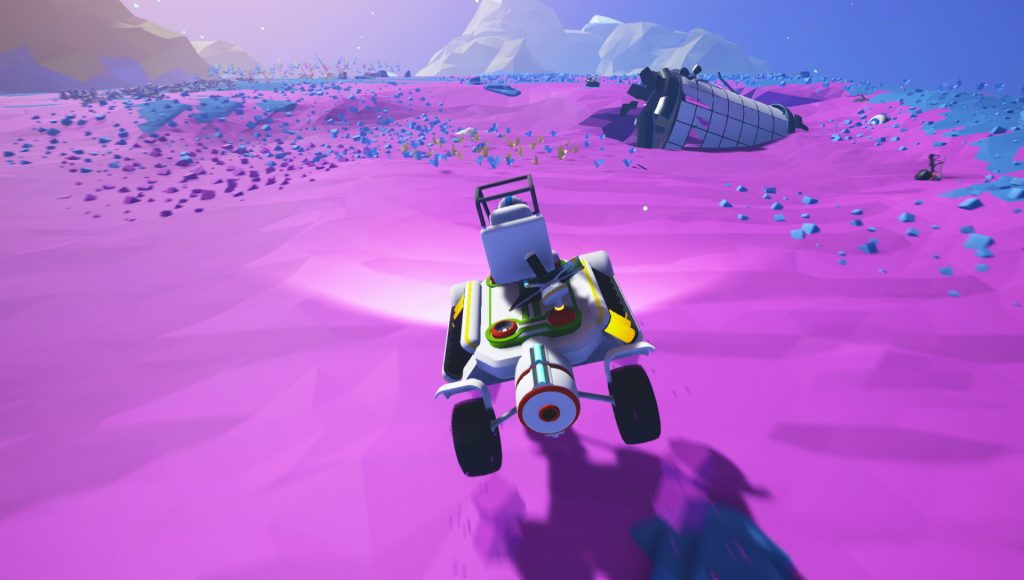View Dependent and Vehicle Dependent Navigation
During my ongoing literature review I often discover interesting facts about things I’ve never thought about. Sometimes I can connect these facts with my own observations: The result is mostly a completely new idea why things are as they are. Maybe these ideas are new to you, too. Therefore I’ll share my new science based knowledge with you!
This week: This time, I think about two different approaches of implementing vehicle control in computer games: view dependent and vehicle dependent navigation.
Like in the real world, one can distinguish between two integral elements when it comes to navigation tasks inside a virtual environment. One has to be able to turn the gaze and to control the direction of motion.
Traditionally, computer games implement the mouse as a means to change the gaze and the keyboard as a means to control the actual locomotion. For instance, WASD commonly allows for a forward, backward and sidewards movement. Forward and backward movement depends on the gaze direction of a user.
Initially, this requires some training of hand-eye coordination and spatial orientation. Players are challenged to understand that they move towards the direction of their view when they keep the forward key pressed and away from it when the press the backward key. In this way, navigation is a combination of controlling the view direction and initiating a locomotion.

However, this only applies to direct locomotion. In the case of navigation using vehicles, forward, backward and left/right are based on the vehicle itself. Hence, the direction of motion is independent of a player’s gaze. Similar to the real world, one can look to the side while moving into a different direction, e.g., driving forward with a car.
This technique allows for an intuitive control of vehicles. Players merely need to know in which direction the vehicle is facing to effectively navigate it through the virtual environment. However, in contrast to direct locomotion, vehicle control game mechanics also provide an alternative approach.
Here, the direction of forward and backward is dependent on the player’s view and not based on the structure of the vehicle. As a result, forward is all the time relative to a player’s perspective. While this not only is less intuitive, it also can result in a high degree of confusion when the player intends to circumnavigate an obstacle and suddenly is driving towards it
Therefore, I like to recommend to avoid view dependent controls for vehicles. These approaches cause a high degree of confusion, feel less natural and are less efficient. Before navigating, players first need to analyze which motion they want to initiate depending on their current perspective. Lastly, view dependent navigation causes a conflict with real world knowledge: a car always drives into the direction it faces independent of a player’s gaze.